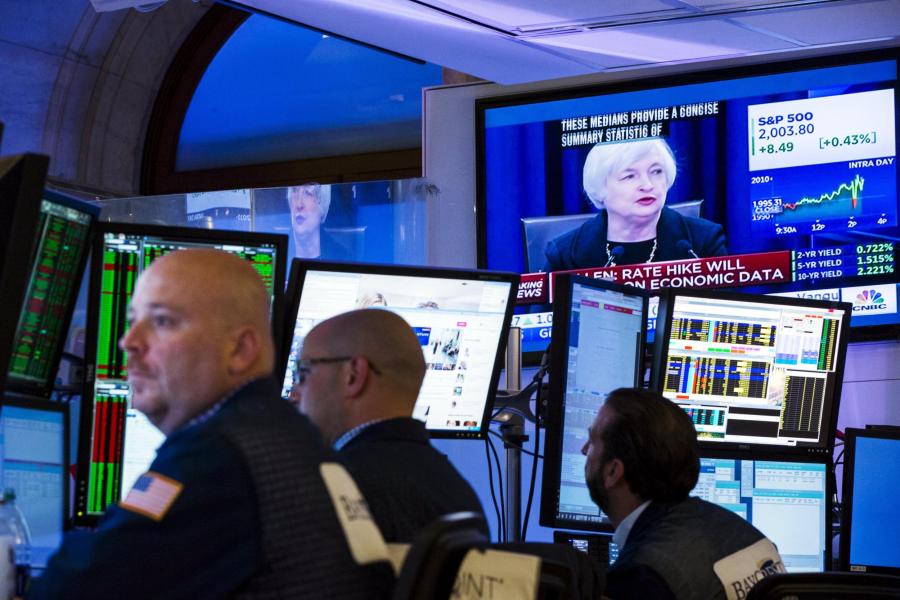It’s hard to take the Fed at their word and believe they are truly “data-dependent.” The data has made the case for a normalization of interest rate policy for a very long time now.
NEW POST: What Hath The Fed Wrought? https://t.co/zeotHzfwIt pic.twitter.com/l9GTky8g33
— Jesse Felder (@jessefelder) April 28, 2016
If it’s not the data that relates to their dual mandate, then what is the Fed really watching?
Over the past eight years, they have aggressively tried to boost the prices of financial assets in an explicit effort to make those who own them feel better and spend more thus boosting the economy via a “wealth effect.” We can argue how effective this policy has been in its ultimate goal of boosting the economy but we can’t argue this has been the clear intent of recent Fed policy. Nor can we argue the efficacy of its immediate goal of boosting asset prices.
NEW POST: If You’ve Been Wondering What’s Driven The Recent Bull Market In Stocks… https://t.co/Qkq1XvN8GK pic.twitter.com/7nNx5exRuj
— Jesse Felder (@jessefelder) January 5, 2016
And when the central bank is entirely focused on creating a wealth effect, we might want to stop and try to assess how well its working. Because if all of our economic hopes are pinned on asset prices and they begin to reverse the consequences of an unwinding of this process could be dramatic.
I’ve recently tracked some anecdotal (and some not so anecdotal) evidence of a reversal in the wealth effect. The high-end market for art has been one showing signs of weakness.
Auctions Roil Art’s Safe-Haven Reputation https://t.co/q7hr4lnmw8 pic.twitter.com/Iw7fbqvpgm
— Jesse Felder (@jessefelder) May 16, 2016
“Bombing” art sales is probably not something the Fed would like to hear right now.
Rough night 4 @Sothebys, pictures bombing all over. "Sellers want prices from 6 mos ago, but this is a new mkt," says dealerVincent Matthu.
— Kelly Crow (@KellyCrowWSJ) May 10, 2016
The ultra-high end segment of the real estate market also suggests the ultra-wealthy are pulling in their horns.
A Worrisome Pileup of $100 Million Homes, ht @NorthmanTrader https://t.co/X3NQjaI8it
— Jesse Felder (@jessefelder) May 31, 2016
Our two largest geographic wealth centers in America, Silicon Valley and Wall Street, are both showing signs of peaking. In the Bay Area, venture capital activity is rapidly eroding.
U.S. Venture Capital Investment Dollars Down 11% Year-to-Date, Late Stage Rounds Hit Hardest https://t.co/zLOT4vjrhO pic.twitter.com/7Dwn5GvJPJ
— Jesse Felder (@jessefelder) May 11, 2016
I guess this comes as no surprise to Silicon Valley insiders.
Silicon Valley: 'Of course the bubble's bursting…' https://t.co/v5mzfMNgqP pic.twitter.com/CwfFiOkujc
— Jesse Felder (@jessefelder) May 11, 2016
As a result, weakness in high-end real estate is beginning to show up in the region.
Silicon Valley Mansions Linger on Market in Real Estate Slowdown https://t.co/RsZnIdLOQH pic.twitter.com/fyWKctSF4C
— Jesse Felder (@jessefelder) May 17, 2016
On the other coast, they rely on another sort of dealmaking, which is showing its own signs of rapid erosion.
Wall Street's Dealmaking Goes From Boom to Bust in a Few Months https://t.co/iP1KscivTv pic.twitter.com/TPgTSCsywW
— Jesse Felder (@jessefelder) May 12, 2016
As a result, the high-end condo boom there is now turning to bust.
Luxury Condo Boom Is Ending in Manhattan https://t.co/Up8FOG0pXl pic.twitter.com/TufvykntPv
— Jesse Felder (@jessefelder) May 11, 2016
All of this begs the question, if real estate is now turning down again how bad could the bust really be? Considering this has been the second-greatest real estate bubble in at least 40 years, I’d say it could be quite bad.
Jeremy Grantham calls the current real estate market a "classic echo bubble" https://t.co/lZVJHySG2k pic.twitter.com/02kJNWEz34
— Jesse Felder (@jessefelder) May 10, 2016
But what’s really most worrisome is that it’s not just real estate; it’s the startup/venture capital bubble, private equity valuations, soaring prices of fine art and other collectibles and last, but not least, another stock market bubble.
S&P 500 median Price to Sales ratio at all time record high#valuation
source: NDR pic.twitter.com/EG6wRwaoAM— Babak (@TN) May 10, 2016
Through their aggressive and unconventional policies, the Fed has arguably now tied our economic fortunes to financial assets like stocks more than ever before and just as these markets all collectively offer more risk than ever before.
33-Year Fed Veteran: ‘The Everything Bubble’ Is About To Burst https://t.co/A404sR2k5t pic.twitter.com/UnltjliAEK
— Jesse Felder (@jessefelder) May 13, 2016
It’s for this very reason, the Fed is more fearful than ever of a new bear market in risk assets that could result in an unwinding of the wealth effect they printed so much money to create in the first place. It’s also why Janet Yellen continues to ignore the data and watch every tick in the Dow Jones Industrial Average like a hawk (dove?).
